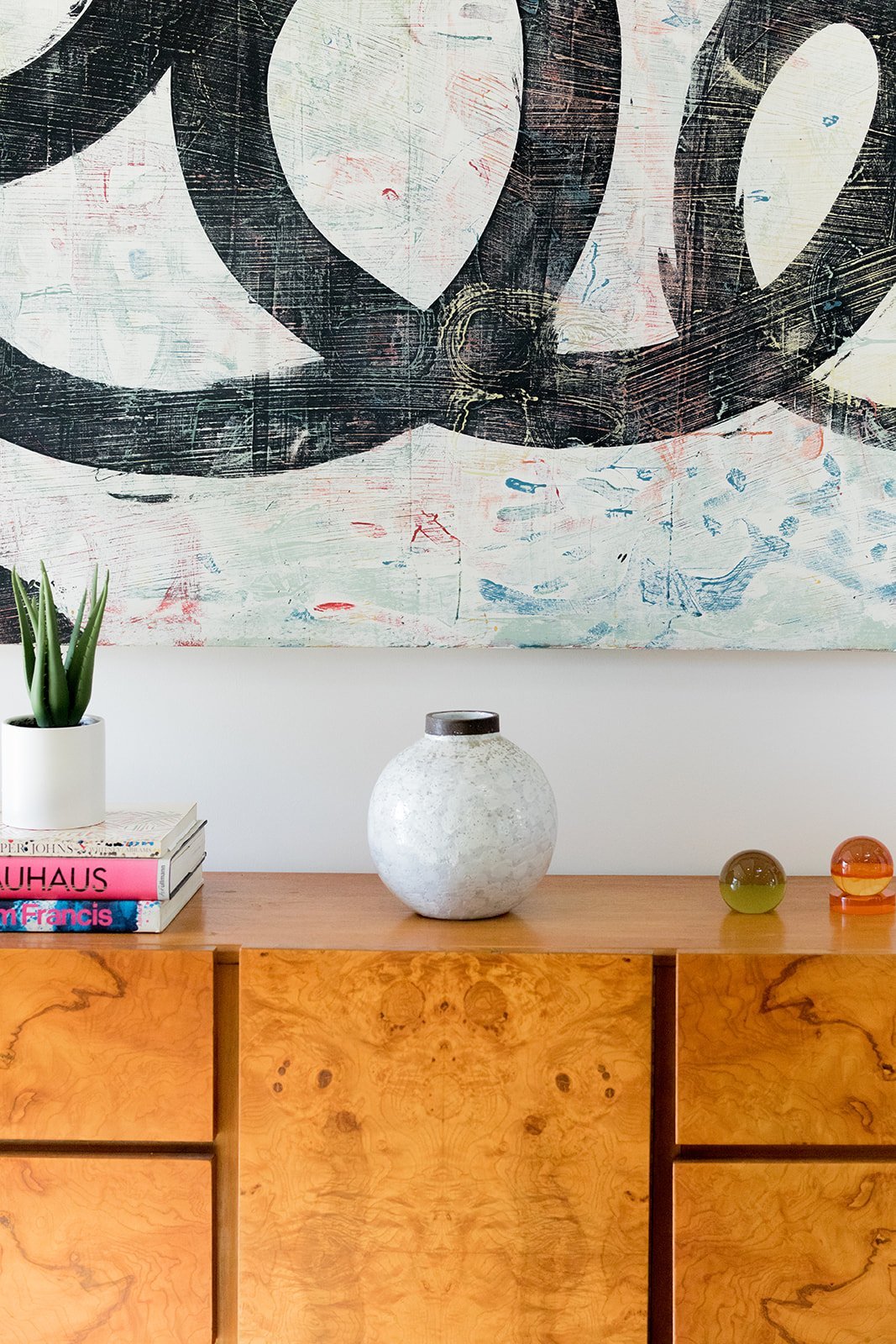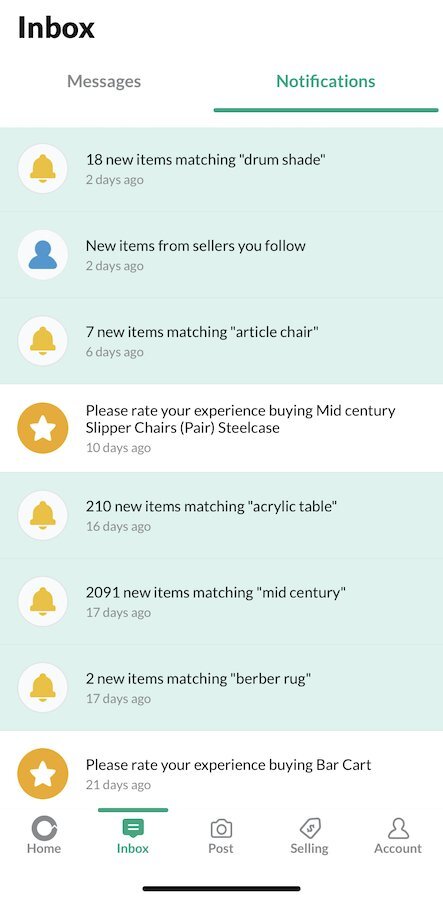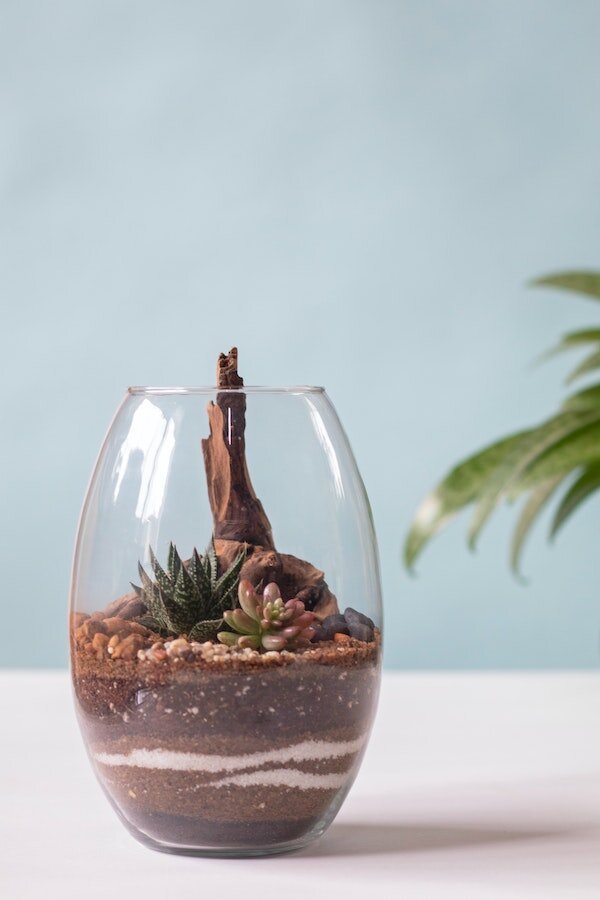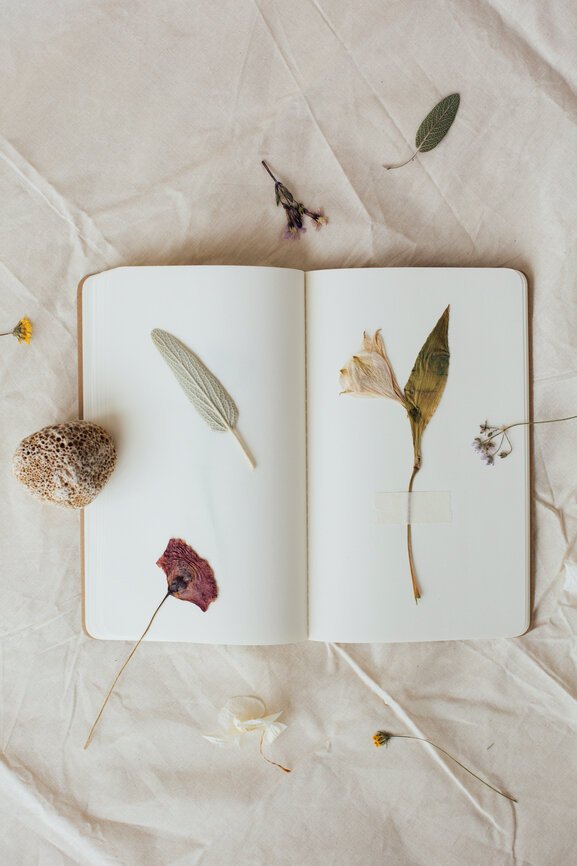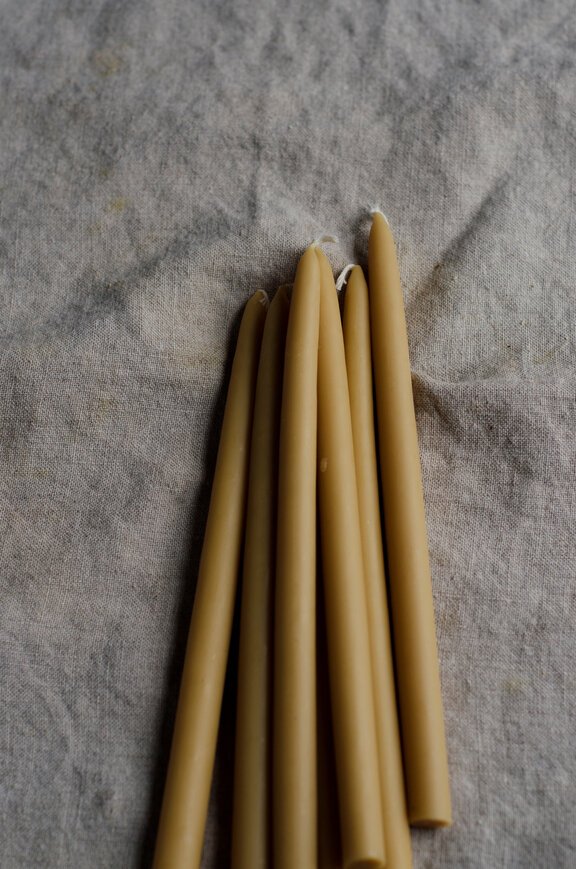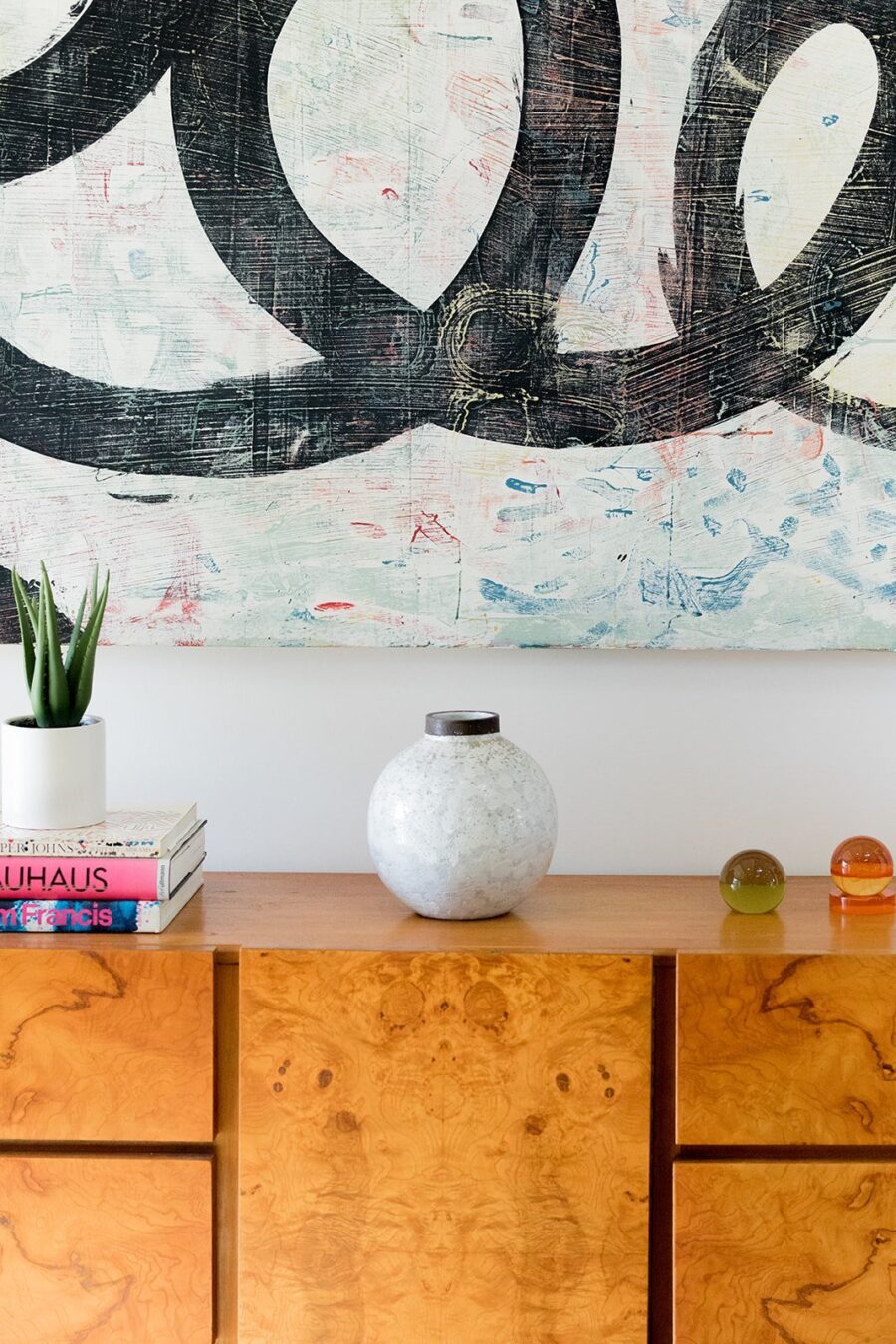
How To Build A Thrifted Home
Mixing The Old & New
The wood is scratched, the back leg wobbles, and the brass knobs could use a shining. But my first thrifted piece of furniture—a Baumritter mid-century high boy dresser—tells the larger story of my space. My home is built with and around pre-loved pieces, many of which are from bygone generations, passed down from various owners’ homes and hands.
“[Thrifting’s] about finding the pieces you love while also allowing them to find you.”
Building a thrifted home is rewarding (because, saving $$), but it also requires patience and persistence. Preferences go the wayside here; it’s not always about sourcing brand names or decorating around specific trends. Rather, the thrill of the thrift is all about opening yourself up to surprise! It’s about finding the pieces you love while also allowing them to find you. Everything else falls into place.
Ready to build your own thrifted home? Here are a few of my favorite tips and tricks for bringing it all together!
Thrifting For Home Goods
1. Find Your Thrifting Platforms & Set Up Notifications
The internet is a powerful tool for thrifting—as if we needed more reasons to be on our phones! Sigh. The trick is to pick two to three platforms (some listed below) so as not to get overwhelmed and then to scour them a few times a day. I do a quick scroll at the beginning or end of work, then sometimes at night during commercial breaks of my favorite shows.
Notifications I have set on OfferUp
So that you’re not glued to your phone though, many platforms have a notification feature to give you first dibs on the next best treasure. You can set your search (down to location radius) for a specific brand or style.
For example, I was recently on the hunt for matching lounge chairs. I bookmarked a few search terms using OfferUp’s notification feature (e.g., “mid-century lounge chairs”, “leather side chairs”, “matching chairs”, “vintage accent chairs”), and I set a search radius of 40 miles—the farthest I was willing to drive for the right chairs. OfferUp then pinged me every time a new listing with my search terms went live. A win-win!
One insider tip: Many thrifted items in my home are because of friends—shout-out to our social and community lead, Alyssa, for helping me get a pair of vintage Steelcase lounge chairs for $150. She saw the chairs on OfferUp and immediately texted me the listing (they were in my house by that night). Likewise, I text my friends when I come across an item I know they’ll love. We thrifters have to stick together, you know?
My Favorite Thrifting Platforms:
Craigslist (or Gumtree for UK thrifting)
Facebook Marketplace (if you browse regularly, the algorithm will begin to show you items that match your recent searches and home aesthetic)
FreeCycle (for free items!)
2. Learn The Jargon & Be Ready To Bargain!
You found something you like—yay! Before contacting the seller, verify the listing is authentic. Do they have real photos of the item (rather than just stock images)? Is there a seemingly accurate description of the product? Does the seller have a profile photo? Where are they located? What is their star rating from other buyers? These are a few things you can quickly check on apps like OfferUp and Facebook Marketplace to ensure a safer, smoother transaction.
My seller profile on OfferUp
Also, there is an entirely different language for thrifting! Don’t worry; it’s easy. Here are a few terms to keep in your back pocket for your next marketplace exchange:
OBO = “or best offer”
MCM = “mid-century modern”
Curb Alert = “free & first come, first serve!”
Firm / Price Firm = “the price is not negotiable”
PPU = “pending pick up”
NWT = “new with tags”
EUC = “excellent used condition”
Oh, and be ready to bargain! This isn’t rude—it’s often expected unless the seller has used the aforementioned “price firm.” I’ve found many people are open to negotiating within 15 to 20 percent. Don’t lowball though; your message will likely get ignored.
It’s kind of an unwritten rule, but you’ll want to agree on the price before you go to pick up the item. I only bargain in person (outside of yard sales) if the piece has flaws that weren’t advertised or reflected in photos. This is also to say: You are not obligated to buy a piece if, when you arrive, it’s not what you were hoping for!
You can ask other questions beforehand, too—hopefully to help eliminate any confusion or awkward conversations. Always ask about pets and smoking when buying fabric furniture, and read the ad thoroughly for any notes about scratches, stains, or tears. (Here are a few additional concerns to keep in mind.)
Finally, it’s okay to request additional photos, measurements, and information about where the piece came from (especially if it’s being marketed as vintage or mid-century; ask about “stamping”). You are an interested potential customer after all!
Here’s an exchange I had with a buyer who ended up purchasing my couch:
A quick note about safety: Don’t send money over the internet unless you’re buying through a secure site like eBay. Most sellers accept payment via Venmo (do this exchange in person), but it’s always good to ask beforehand in case you need to swing by the ATM. And always meet in a safe place or share your location with a loved one when picking up an item alone.
3. Regularly Visit Thrift Shops & Garage Sales
I recently found matching art deco table lamps for $10 at a garage sale just a few blocks from my apartment. I still can’t believe it. I’ve also found plants, clothing, and this incredible Los Angeles Times collectors book for two dollars at small yard sales in my neighborhood.
Garage sales (especially moving sales or estate sales) are my favorite source for secondhand goods; there’s nothing like shopping in person, interacting with the seller, and getting to see a range of pre-loved items all at once. You can often bargain when buying in bulk, too.
Likewise, I’ve familiarized myself with thrift shops in my city and know which ones are best for big furniture or smaller items. For example, ACTS in Altadena always has oversized frames for artwork, and I’ve recently discovered my local Goodwill receives frequent Picasso prints—who knew! Someone nearby must be clearing out their collection because I’ve scored 24” by 35” prints on two different visits, all under $20.
Garage & Yard Sales Tips
Visit early if you want the best items (but respect the start time—don’t pick through goods before the sale begins!).
Visit later or on the second day of the sale if you’re looking to get the best prices.
Always bring cash—the smaller the bills, the better!
Use sites like estatesales.net and garagesalefinder.com, or simply drive around on the weekend looking for signs (my personal favorite).
Thrift Stores Tips
Shop local thrift stores to support small biz when you can.
Ask the staff when they get their donations and what times they put items out on the floor.
Most thrift stores use color-coded tags and offer discounts on specific days, so take notes!
Bring Your New Finds Home
You bought something (or many things) you love! Now it’s time to bring your new treasures home. The below tips will help you get that dusty dresser from the neighbor’s yard into your fourth-story bedroom!
1. Transport Your Treasures
When I first moved to LA and bought a couch, I had no way to transport it from the seller’s apartment to mine. That’s when I learned about Dolly—an app for on-demand moving help and furniture delivery. After seeing the couch in person, I booked a same-day pickup on the app, costing around $50. The couch arrived safely in my living room (they help with this too!) a few hours later.
Craigslist is another great source for finding people with trucks who will help transport large furniture for a reasonable fee. Alternatively, you can make friends with your neighbor who always seems to be going to Home Depot (you know the one). Offer a trade service—e.g., your homemade lasagna for their help moving a credenza!
2. Clean Your Goods!
I know, I know—cleaning? But yes, cleaning your thrifted finds is necessary when passing hands and homes, to disinfect them but also to give them new life, love, and shine.
“Cleaning your thrifted finds is necessary when passing hands and homes, to disinfect them but also to give them new life, love, and shine.”
Before bringing your new furniture into the house, give it a good wipe down, following any specific instructions for the fabric or materials. Here’s how to clean a fabric sofa, tips for rug care and cleaning, and some recipes for homemade nontoxic furniture cleaner.
3. Don’t Be Afraid To Play With Pieces
My home is always evolving, and that makes thrifting more fun! While you can choose to thrift for a specific style or aesthetic, you’ll likely have a mix of items from different decades and designers. That’s okay! It’s about playing with your new pieces and moving them throughout your home to find what works best for you and your space.
Don’t be afraid to mix fabrics, colors, or wood tones, either. A hodgepodge of rugs, an assortment of wine glasses, and mismatched nightstands may not sound visually pleasing in theory, but these choices can work! It just depends on a few design variables:
Have a dominant wood in each room rather than mixing too many tones or stains (e.g., walnut vs. birch vs. teak). You can always DIY a piece if you love the bones but want to update the color or the hardware.
Use neutral shades to balance out statement pieces. Our couch is moss green and velvet 😍, so I’ve chosen to surround it with blacks, creams, warm woods, and more neutral tones.
Go big with artwork! It’s easy to change pieces out.
For the best flow, stick within a certain decade. Most pieces in our home are from the ‘60s and ‘70s, with a few pops of art deco decor. This way, the lines and curves of furniture match and better complement one another, as opposed to mixing, say, a luxurious 1920s chest with a sleek, modern coffee table.
4. Embrace That Thrifting Is A Process
Thrifting is a never-ending process—and part of the journey is learning that not everything will work well in your home. Earlier this year, I was on the hunt for a credenza and made an impulsive decision, buying this old piece of office furniture that I thought we could make work. But it wasn’t what I was searching for. And once we got it up into our apartment (which was no small feat), I knew I’d have to resell it.
“You can always resell pieces—and sometimes even make money if you spruced it up or added a new coat of paint or stain.”
So consider this your reminder that you can always resell pieces—and sometimes even make money if you spruced it up or added a new coat of paint or stain. I’m often rearranging, selling, and trading items that no longer serve me or my space.
A few tricks to avoid ending up with the wrong item:
Try not to buy something on impulse, if possible. Thrifting is often a first-come, first-serve game, but if you can give yourself some time on pieces you’re just not sure about, do it.
Text photos of the item to trusted friends. I’m known for this. I regularly send my friends and sisters pieces I’m considering for their opinions.
Don’t be afraid to say no—repeating this because I often get buying anxiety! Even if you drove across the city and the piece isn’t what you expect, it’s okay to say, “No, thank you.” Most people in the thrifting community are kind and considerate—if you change your mind, just say so.
5. Not Everything Will Be Thrifted—And That’s Okay!
Finally, it’s important to remember that not everything in your home will be thrifted. I have dishes from Ikea, a kitchen table from Wayfair, and bathmats from World Market. My Article coffee table was a housewarming gift to myself. And during COVID, after years of owning only secondhand couches and then reselling them whenever I moved to a new place, I finally invested in a made-to-order sectional from sustainable brand Sabai.
“Living sustainably is about progress, just as building a thrifted home is a process without hard rules.”
Living sustainably is about progress, just as building a thrifted home is a process without hard rules. Will you eventually find a working coffee maker at Goodwill? Likely. Do you sometimes just need to grab a coffee pot at Target because you don’t have time to go to every Goodwill in your city? Also yes.
It’s about balance and finding what works best for you, your home, and your lifestyle. My hope is that these tips and tricks can make curating a thrifted space just a bit easier—Target coffee pot mixed with thrifted mugs and all.
Do you have tips for thrifting home furniture and decor? I’d love to hear about your favorite finds and methods in the comments below! xx
Kayti Christian (she/her) is a Senior Editor at The Good Trade. She has a Master’s in Nonfiction Writing from the University of London and is the creator of Feelings Not Aside, a newsletter for sensitive people.

